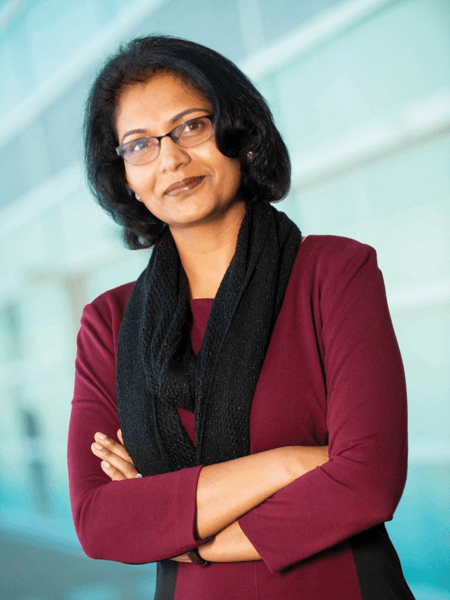MIT Alumna is Scaling up Biology to Create a Global Drug Supply
-
-
slice.mit.edu
Filed Under

Recommended
Success in the world’s $300 billion-a-year pharmaceutical industry depends on more than drug discovery and testing. It’s also essential to make consistent batches of complex medicines—such as biologics, which are genetically engineered proteins derived from human genes—in multiple facilities around the world. Just ask Gargi Maheshwari PhD '99, who helps develop those manufacturing processes.
“For complex large molecules such as vaccines and biologics, the manufacturing process for the most part becomes the product,” says Maheshwari, an executive director at Merck, which she joined soon after completing her degree in chemical engineering at MIT.
At Merck, Maheshwari steered one team’s successful effort to solve a production glitch that threatened manufacture of live varicella zoster virus required for the widely used shingles vaccine, Zostavax, and for the childhood vaccine ProQuad. She then led the accelerated development and manufacture of Merck’s new cancer-fighting drug Keytruda, which the U.S. Food and Drug Administration terms a breakthrough therapy. Recently approved to treat melanoma and lung cancers, the monoclonal antibody drug shows promise against 30 other cancers in research settings.
Such projects require the ability to predict and control the activities of cells, viruses, and complex biological molecules and to scale up from tiny amounts in the laboratory to thousands of liters in production. To do that, she draws on experience gained at MIT, where she worked with systems biologist Doug Lauffenburger and tissue engineer Linda G. Griffith on cell behaviors essential to creating biomaterials, such as consistent migration. Her awards include a Poitras Fellowship for outstanding biomedical engineering research at MIT and a handful of Merck honors.
Raised in a small town near Bangalore, India, Maheshwari fell in love with biology and mathematics in high school. She earned bachelor’s and master’s degrees in biochemical engineering at the Indian Institute of Technology in Delhi. She started her PhD studies at Caltech but transferred after meeting her future husband, Niranjan Sardesai, a chemist who had lined up a postdoc at MIT.
MIT’s problem-solving approach appealed to her immediately. “I wanted to apply the fundamentals of engineering to biological systems to make something of benefit,” she says.
Maheshwari also relies on an MIT-cultivated habit of deconstructing complex problems into smaller parts. “Then it doesn’t look that daunting. You can address the smaller parts and put everything back together again,” she says.
Maheshwari and her husband, chief operating officer of the immunotherapy development company Inovio, live with their two sons near Philadelphia.
This article originally appeared in the March/April 2016 issue of MIT Technology Review magazine.







